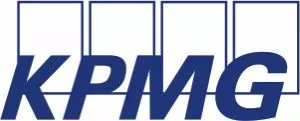Unprecedented – the word that seemed to adequately capture the general sentiments around the COVID-19 pandemic and its effect on the global economy. Indeed, the effect of COVID-19 cannot be overemphasized. There is no doubt that this global pandemic created unique and varied challenges and business conditions for all businesses and industries. Therefore, it comes as no surprise that, in December 2020, the Organization for Economic Cooperation and Development (OECD) released a document titled "Guidance on the Transfer Pricing (TP) implications of the COVID-19 pandemic" (the COVID-19 guidelines) which was aimed at providing much needed clarity to taxpayers in analyzing the accounting periods impacted by the pandemic.
As companies are currently navigating the preparation of TP documentation for the first financial year (FY) impacted by COVID-19, it is only fitting that we revisit the COVID-19 guidelines with a view to distilling key aspects that will prove useful in objectively reporting financial outcomes. In a bid to ensure that the arm's length principle is continuously applied as the core of TP during the COVID-19 pandemic, the COVID-19 guidelines addresses the following priority issues:
1. Comparability Analysis: As is often stated, the comparability analysis is at the heart of the arm's length principle. The effective application of the principle overriding TP is hinged on obtaining financial information of companies considered to perform similar activities as those of the entity whose compliance with the arm's length standard is being assessed. The COVID-19 guidelines seeks to address the challenges and likely adjustments that may arise while selecting appropriate comparables for 2020 or 2021 FY, as the case may be, given the impact of the pandemic on this period. These identified adjustments include:
I. Reduced reliance on historical data while performing comparability analysis. However in lieu of historical data, reliance can be placed on the various effects of the pandemic on specific businesses and industries.
II. The use of a detailed analysis of budgeted/forecast financial information (pre-COVID), as a basis to compare the actual financial results achieved during COVID-19.
III. The use of more than one TP method as a corroborative method to test the arm's length nature of a transaction.
IV. The appropriate use of good judgement and flexibility in determining the arm's length range of a transaction.
V. The application of the outcome-testing approach which allows for the use of information that becomes available after the taxable year in determining arm's length conditions.
The accurate delineation of transactions plays a major role in ensuring appropriate application of the identified adjustments to determine the arm's length nature and condition of each transaction.
2. Allocation of COVID-19 specific costs and losses: The COVID-19 pandemic brought about a number of challenges to MNEs. One of the major challenges is the generation of losses which may be due to a drop in demand for products or a complete closure of business activities. The COVID-19 guidelines provides answers to questions that are likely to arise as a result of these losses. These questions include whether limited risk entities can incur losses, how operational or exceptional losses should be allocated and how to account for exceptional COVID-19 related costs can be appropriately considered in a comparability analysis.
The key takeaways from this section of the COVID-19 Guidelines are as follows:
I. The importance of a thorough review and documentation of the functions performed, assets utilized and most especially the risks borne by each connected person carrying involved in a transaction cannot be overemphasized and its usefulness spills over into effectively dealing with the challenges created by the pandemic. It also helps to ensure that losses are allocated at arm's length and no assumptions are made in allocating losses due to the nature of risks borne by each entity.
II. In a bid to ensure that COVID-19 specific costs are appropriately allocated, the COVID-19 guidelines place emphasis on how independent parties under comparable circumstances would operate. Essentially, the entity assuming the risks associated with the costs should be the party responsible for defraying such costs. Further, where the entity who bears such cost at the initial stage is different from the entity likely to assume the risk associated with such costs, the costs need to be passed on to the entity that actually assume the risk.
III. Some businesses may need to invoke the force-majeure clause in their agreements with related parties in order to mitigate the adverse effect of the COVID-19 pandemic on their business operations. A TP analysis where the force-majure is being considered or has been implemented should begin by reviewing the agreement to determine if triggering the force-majeure clause is permissible given the circumstances. Also, a comparability analysis should be conducted on whether a force-majeure will be invoked by independent parties under comparable circumstances.
3. Government Assistance Programmes: Although the focus of most governments was to mitigate the spread of the corona virus and provide adequate health care services to its citizens, governments also aided businesses that were negatively impacted by the pandemic. The assistance provided by government include but are not limited to tax relief, loan deferrals and direct financing. The assistance offered by government poses a challenge in identifying comparable companies that enjoyed comparable government assistance. Therefore, it is crucial for taxpayers to accurately determine the nature, substance and duration of any government assistance they receive as well as the implication of this assistance in their local market and the reduced risks borne by the entity which may invariably affect the arm's length price.
4. Advance Pricing Arrangements (APA): An APA is an agreement between the tax authorities and a taxpayer concerning the TP method for analyzing the taxpayer's future transaction with its related parties. Arriving at a consensus position during APA negotiations require defining a set of criteria/conditions under which the APA would apply. APAs typically include key assumptions concerning the economic and operational conditions likely to impact the transactions covered by the APA.
The COVID-19 pandemic has led to great uncertainty in the treatment of transactions previously agreed upon by both tax administrators and taxpayers, thereby contradicting the primary purpose of an APA. As a result, taxpayers are encouraged to be transparent with the effect of COVID-19 on any agreed transaction with the tax administrators and jointly seek the best approach to resolve all arising issues. Based on the economic uncertainty, it will come as no surprise if taxpayers and tax administrators exhibit unwillingness to initiate new APA applications or continue with existing APAs. In the case of Nigeria where the APA provisions in the TP Regulations are yet to come into force, the uncertainty may delay the implementation of APAs by the Federal Inland Revenue Service.
The impact of COVID-19 cannot be overlooked while preparing TP documentation going forward. In light of the foregoing, taxpayers must: some of the points to note are as follows:
- Perform an in-depth review of all transactions with related
parties while documenting the details of such transactions, in
order to accurately determine the functions performed, assets
utilized, and risks borne by each party to a transaction. This is
aimed at ensuring that the effect of COVID-19 is properly captured
in determining the arm's length nature and pricing of the
transaction.
- Properly identify COVID -19 specific costs and revenue as these cost/revenue items will play a major role in carrying out a thorough comparability analysis. Paying attention to this process will assist taxpayers to identify companies that have been affected by COVID-19 in a similar manner as the parties to the transactions being analyzed.
In conclusion, the OECD guidelines on COVID-19 has provided clarity and specific guidance required to address the challenges involved in ensuring that the arm's length principle is applied in testing related party transactions because of the COVID-19 pandemic. However, the guidance allows for some level of flexibility due to the peculiarity of each transaction and the varied effect of the pandemic on across industries and jurisdictions. It would be equally useful for tax administrators to proactively issue relevant notices and guidelines to address any further challenges likely to arise given the unique situation in each jurisdiction.
The content of this article is intended to provide a general guide to the subject matter. Specialist advice should be sought about your specific circumstances.


